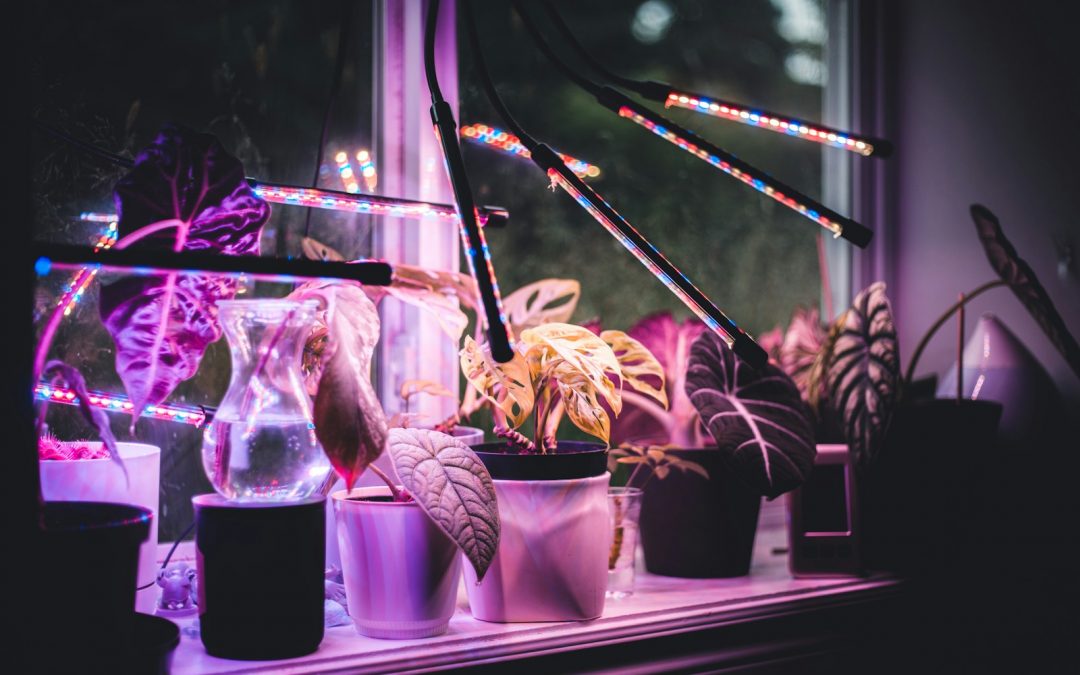Contents
- 1 How to Use Grow Lights for Indoor Plants: A Beginner’s Setup Guide
- 1.1 Why Use Grow Lights for Indoor Plants?
- 1.2 Types of Grow Lights Explained
- 1.3 Best Plants for Grow Light Success
- 1.4 How Far Should Grow Lights Be From Plants?
- 1.5 How Long Should You Leave Grow Lights On?
- 1.6 Grow Light Placement Tips
- 1.7 Best Tools and Products
- 1.8 Common Mistakes to Avoid
- 1.9 Related Articles
- 1.10 Outbound Resource
- 1.11 FAQs About Grow Lights for Plants
- 1.12 Final Thoughts on Using Grow Lights
How to Use Grow Lights for Indoor Plants: A Beginner’s Setup Guide
Indoor gardening doesn’t have to stop when sunlight is scarce. Whether you live in a shaded flat or want to grow healthy plants through winter, grow lights offer the perfect solution. In this beginner-friendly guide, you’ll learn how to use grow lights for indoor plants effectively — including what types to buy, how far to place them, how long to leave them on, and which plants benefit the most.
Why Use Grow Lights for Indoor Plants?
Grow lights act as artificial sunlight, giving your houseplants the energy they need for photosynthesis. They’re essential for:
Low-light homes or rooms
Winter months when sunlight is weak
Growing herbs or vegetables indoors
Starting seedlings early
Proper lighting ensures healthier growth, vibrant colors, and more flowers or fruit.
Types of Grow Lights Explained
1. LED Grow Lights
Most energy-efficient
Long lifespan (up to 50,000 hours)
Cool to the touch (safe for small spaces)
Full-spectrum options available
2. Fluorescent Lights (T5, T8)
Great for seedlings and leafy greens
Affordable and widely available
Less efficient than LED over time
3. Incandescent Bulbs
Least efficient and produce excess heat
Not recommended for long-term use
Tip: Choose full-spectrum LED grow lights for the best results across various plant types.
Best Plants for Grow Light Success
Some indoor plants that thrive under grow lights include:
Herbs (basil, mint, parsley)
Leafy greens (lettuce, spinach)
Succulents and cacti
Orchids and African violets
Snake plant
Monstera and pothos
How Far Should Grow Lights Be From Plants?
LED grow lights: 12–24 inches above plant tops
Fluorescents: 6–12 inches
Avoid touching leaves with the bulb to prevent burns
Adjust height based on plant response — leggy plants need more light, while scorched leaves mean the light is too close.
How Long Should You Leave Grow Lights On?
Most indoor plants: 12–16 hours a day
Use a timer to automate light cycles
Give plants 6–8 hours of darkness to rest
Grow Light Placement Tips
Position directly above the plant for even light distribution
Avoid placing lights at an angle (causes stretching)
Group plants by light needs (e.g. low-light vs high-light species)
Best Tools and Products
Full-Spectrum LED Grow Light Strip – Amazon UK
Energy-saving, adjustable brightness, great for shelvesGrow Light Hanging Adjustable Rope Clip Hangers – Amazon
If you’re setting up grow lights, using adjustable rope clip hangers can help you position your lights at the ideal height for each plant stage.
Common Mistakes to Avoid
❌ Leaving lights on 24/7 (plants need rest)
❌ Using the wrong color spectrum (cool vs warm light)
❌ Placing grow lights too far above foliage
❌ Not adjusting for plant growth height
Related Articles
Outbound Resource
FAQs About Grow Lights for Plants
Q: Can grow lights replace sunlight completely?
A: Yes, with the right spectrum and timing, grow lights can fully support plant growth indoors.
Q: How do I know if my plant needs more light?
A: Signs include yellowing leaves, slow growth, or leggy stems stretching toward the light source.
Q: Do all plants need grow lights?
A: Not necessarily. Low-light plants like ZZ plant or snake plant can thrive in ambient light but benefit from grow lights during darker months.
Final Thoughts on Using Grow Lights
Grow lights are one of the best tools for boosting indoor plant health and expanding your growing potential year-round. With a basic understanding of bulb types, distance, and duration, you can turn any corner of your home into a thriving green space.
Use timers for consistency, opt for full-spectrum bulbs, and monitor your plants’ responses — they’ll tell you what they need. Whether you’re growing herbs on a kitchen windowsill or creating an indoor jungle in your lounge, grow lights are a smart, energy-efficient way to light up your plant life.

